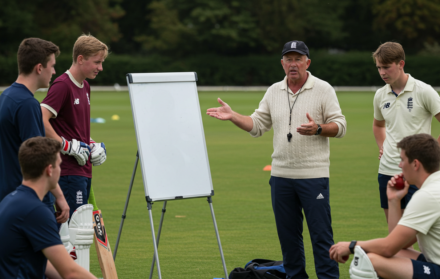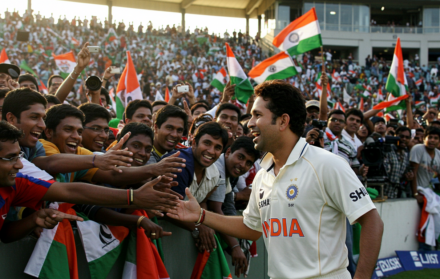
What Are the Best Tips for Effective Onfield Communication in Cricket
Onfield communication in cricket is higly crucial, both on and off the field. It plays a vital role in coordinating fielding positions, executing strategies, and maintaining team unity and spirit. By following the best tips for on-field communication, players can enhance their performance and increase their chances of success.
This article explores various aspects of on-field communication in cricket and provides valuable insights for players and teams.
The key areas covered include clear verbal communication, non-verbal communication through hand signals and eye contact, field placement and strategy communication, maintaining team spirit and unity, and pre-game planning and team meetings. Implementing these tips can significantly improve communication on the field and contribute to a cohesive and successful team dynamic.
Clear Verbal Communication

Clear verbal communication plays a crucial role in the game of cricket. It’s the secret ingredient that can elevate a team’s performance and avoid on-field confusion. In this section, we’ll dive into the art of effective communication during different cricket scenarios.
From calling for the ball to seamless communication between batsmen, we’ll explore how concise and precise verbal cues can make or break a game. So get ready to unravel the power of words on the cricket field!
Calling for the Ball
Calling for the ball is an essential aspect of on-field communication in cricket. It plays a vital role in helping fielders avoid collisions, ensuring efficient fielding, and maintaining team coordination. Here are some key points to consider when calling for the ball:
Use a clear and loud voice to immediately grab the attention of the fielders.
- Call out with the specific purpose of catching the ball, using phrases like “mine” or “take it.”
- To prevent any confusion, address the fielder you are throwing the ball to by their name or nickname.
- Be confident and assertive in your call to avoid any hesitation or ambiguity.
Pro-tip: Developing effective calling skills and forming a strong fielding unit require practice and repetition. Therefore, it is crucial to consistently communicate loudly during fielding drills and practice sessions to improve overall on-field communication.
Communication between Batsmen
Effective communication between batsmen is crucial in cricket to ensure smooth coordination and scoring opportunities. Communication between batsmen should include both verbal cues and non-verbal signals.
Verbal cues are necessary while running between wickets, calling for quick singles or doubles, and avoiding confusion. Non-verbal signals, such as hand gestures, can be used to indicate running intentions or convey information about fielding positions. Additionally, maintaining eye contact plays a significant role in understanding each other’s intentions and responding to signals effectively.
Building partnerships is another essential aspect of communication between batsmen. It involves cultivating a strong understanding and trust to ensure a united approach towards scoring runs. Effective communication also enables batsmen to adapt to changing match situations and make informed decisions.
It is important to note that effective communication not only enhances batting partnerships but also fosters team unity and improves overall performance on the field.
Non-Verbal Communication

Non-verbal communication plays a crucial role in the world of cricket, with hand signals and eye contact being key elements to master. As players hit the field, the ability to convey messages through subtle gestures can make all the difference in forming a winning team.
Let’s delve into the intriguing realm of non-verbal communication in cricket, exploring the significance of hand signals and the power of eye contact. Get ready to uncover the secrets behind these silent but impactful forms of on-field communication.
Hand Signals
- Hand signals play a crucial role in on-field communication in cricket. They help convey messages quickly and discreetly without alerting the opposition. Here are some common hand signals used in cricket:
- Bowler’s signal: The bowler uses hand signals to communicate with the captain or wicketkeeper on the desired delivery type or field placement.
- Catch signal: Fielders use hand signals to indicate their intention to attempt a catch or take responsibility for a specific catch.
- Run signal: Batsmen use hand signals to communicate their intention to take a run, whether it’s a single, a two, or an aggressive run.
- Field placement signal: Captain and fielders use hand signals to communicate changes in field positions or indicate specific placements for the fielders.
- Timeout signal: Captains use hand signals to indicate a timeout or a strategic discussion with the team.
Using clear and understood hand signals contributes to effective on-field communication, enhancing coordination and teamwork.
Eye Contact
Eye contact is a pivotal aspect of effective on-field communication in the game of cricket. It enables players to convey vital information without the necessity of verbal communication. Eye contact among fielders can signify the intention to catch a ball or make a throw, thereby ensuring seamless coordination on the field.
Batsmen also utilize eye contact to communicate while running, determining whether to complete a run or stay at their respective ends. By maintaining eye contact, players establish a connection and understanding, which ultimately leads to enhanced teamwork and overall performance on the field.
In cricket, eye contact serves as an indispensable element of non-verbal communication, facilitating smooth and efficient play.
Field Placement and Strategy Communication

Field placement and strategy communication in cricket play a crucial role in setting the tone and determining the outcome of the game. In this section, we will explore the pivotal aspects of effective on-field communication, focusing specifically on the captain’s role in guiding the team’s decisions and signaling changes in field positions.
Get ready to uncover the tactics, methods, and coordination involved in optimizing field placement to outsmart the opposition and gain a competitive edge on the cricket field.
Captain’s Role in Communication
The captain’s role in communication is crucial in cricket as they play a vital part in on-field communication. They are responsible for leading the team and ensuring effective coordination among players. The captain’s role includes:
- Providing clear instructions and direction to the team during the match.
- Making quick decisions and adjusting field placements based on the game situation.
- Communicating strategies and tactics to teammates to execute game plans effectively.
- Motivating and encouraging players, boosting team spirit and unity.
- Acting as a liaison between the players and the coaching staff.
- Maintaining calm and composed communication, especially during high-pressure moments.
It is essential for the captain to possess strong leadership skills and effective communication abilities to ensure smooth communication and successful performance on the field.
Signaling Changes in Field Positions
To effectively communicate changes in field positions in cricket, players can use hand signals to convey strategic instructions. This method, known as signaling changes, allows for quick and discreet communication between fielders.
By utilizing these hand signals for signaling changes in field positions, players can effectively communicate without alerting the opposition, thereby enhancing team coordination and defensive strategies during the game.
Maintaining Team Spirit and Unity

While playing cricket, maintaining team spirit and unity is crucial for effective on-field communication. In this section, we’ll explore various aspects that contribute to this, including encouragement and support, respectful communication, discussing game plans and tactics, and clarifying roles and responsibilities.
By understanding the significance of team spirit, we can elevate our communication skills, strengthening our bond as players and increasing our chances of success on the cricket field.
Encouragement and Support
Encouragement and support play a crucial role in effective on-field communication in cricket. Here are some ways to foster team spirit and unity:
- Positive reinforcement: Acknowledge and celebrate successes and efforts to boost morale and provide encouragement and support.
- Motivational speeches: Inspire teammates with motivational words and stories that offer encouragement and support before and during matches.
- Active listening: Pay attention to teammates’ concerns and provide a supportive ear for encouragement and support.
- Team huddles: Gather as a team to discuss strategies, offer encouragement, and reinforce unity with encouragement and support.
- Mentoring: Senior players can mentor and guide younger or less experienced team members, providing encouragement and support.
By focusing on encouragement and support, teams can build a strong bond and enhance their overall performance on the field.Respectful Communication
- Respectful listening: Pay close attention to what your teammates have to say and give them the respect they deserve.
- Positive feedback: Encourage and support your teammates, providing constructive feedback to help them enhance their skills.
- Effective body language: Maintain eye contact and use appropriate hand signals to clearly and respectfully convey messages.
- Respecting roles: Recognize and honor the roles and responsibilities of each player, ensuring that everyone feels valued and heard.
Discussing Game Plans and Tactics
- Start with a team meeting to discuss goals and objectives.
- Exchange ideas and suggestions on different game plans.
- Create a clear and concise plan that everyone understands.
- Assign specific roles and responsibilities to each player.
- Discuss strategies for specific situations like batting powerplays or bowling death overs.
- Encourage open communication and active participation from all team members.
- Regularly review and adapt game plans based on performance and opponent analysis.
By diligently discussing game plans and tactics, teams can enhance their on-field communication and increase their chances of success in cricket.
Clarifying Roles and Responsibilities
Clarifying roles and responsibilities in cricket is essential for effective on-field communication and team coordination. To achieve this, creating a clear and structured table is crucial. The table outlines each player’s specific roles and responsibilities.
Pro Tip: Regularly reviewing and reinforcing roles and responsibilities during team meetings can enhance communication and ensure everyone is on the same page. This promotes teamwork and improves performance on the field.
Best Tips for Effective On-Field Communication in Cricket

Effective on-field communication is crucial for success in cricket. Here are some tips:
- Understand the personalities: Tailor communication based on the unique personality types of each team member, as effective communication depends on individual preferences.
- Invest time in training: Dedicate part of training sessions to improve communication skills and build a cohesive team. This can improve coordination and understanding on the field.
- Utilize non-verbal communication: Memorize hand signals and other non-verbal cues to communicate with teammates. This can help in avoiding the opposition from figuring out the team’s plans.
- Be precise and concise: The communication process should be to the point to have the maximum effect on team members. Avoid confusion by being clear and specific in conveying messages.
- Make use of natural breaks in the game: Use the natural breaks in cricket, such as between overs or when a wicket falls, to communicate tactics and make adjustments in the field. Maintain control of the pace to keep the game flowing smoothly.
- Maintain eye contact: Fielders should maintain eye contact with the captain to facilitate quick changes in the field. This ensures that all players are on the same page and can react promptly to game situations.





